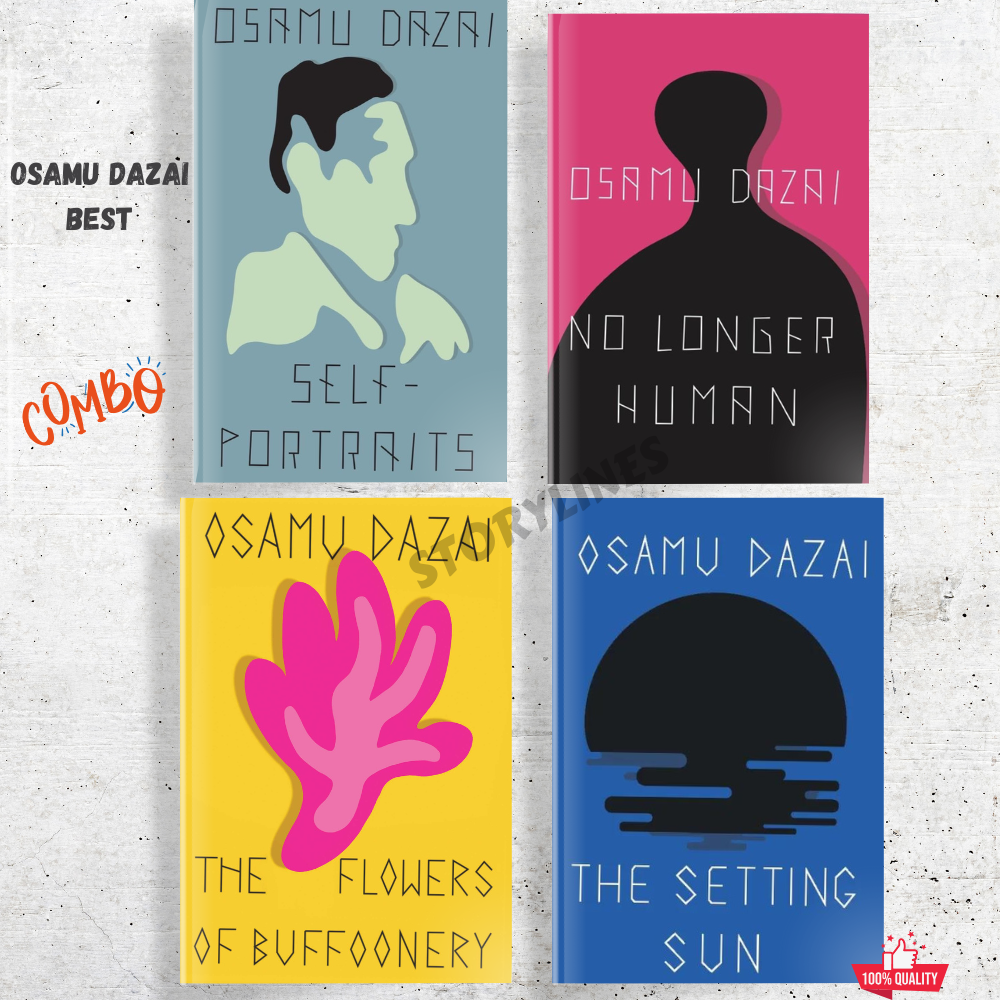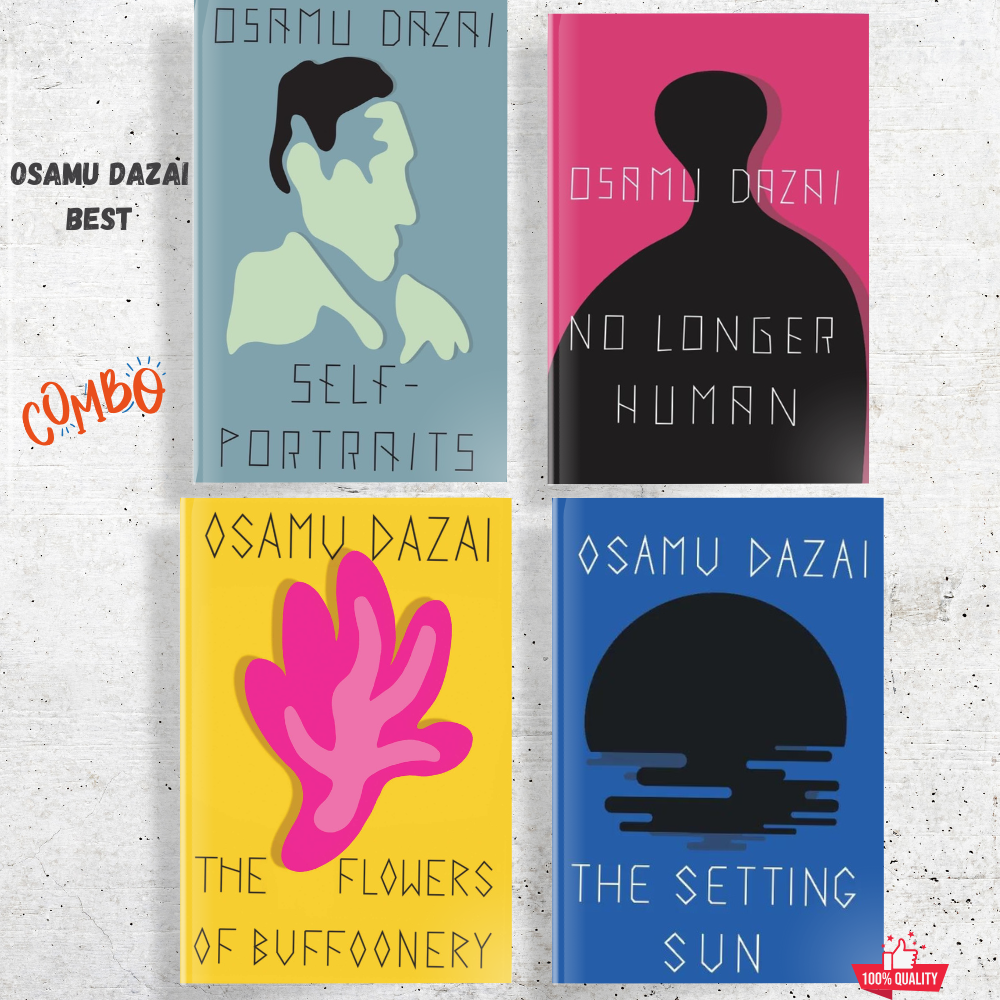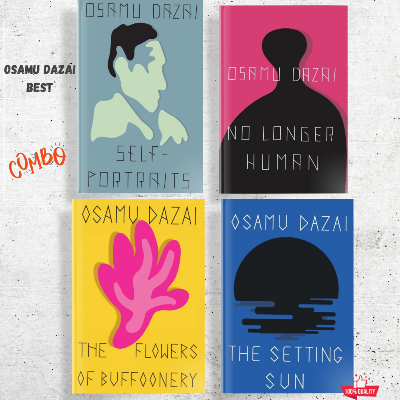Synopsis:
The Flowers of Buffoonery
The Flowers of Buffoonery opens in a seaside sanitarium where Yozo Oba — the narrator of No Longer Human — is convalescing after a failed suicide attempt. Friends and family visit him, and nurses and police drift in and out of his room. Against this dispiriting backdrop, Yozo and his visitors try to maintain a lighthearted, even clownish atmosphere: playing cards, smoking cigarettes, vying for attention, cracking jokes, and trying to make each other laugh. Dazai is known for delving into the darkest corners of human consciousness, but in The Flowers of Buffoonery he pokes fun at these same emotions: the follies and hardships of youth, of love, and of self-hatred and depression. A glimpse into the lives of a group of outsiders in prewar Japan, The Flowers of Buffoonery is a fresh and darkly humorous addition to Osamu Dazai’s masterful and intoxicating oeuvre.
NO Longer Human:
The poignant and fascinating story of a young man who is caught between the breakup of the traditions of a northern Japanese aristocratic family and the impact of Western ideas. Portraying himself as a failure, the protagonist of Osamu Dazai's No Longer Human narrates a seemingly normal life even while he feels himself incapable of understanding human beings. Oba Yozo's attempts to reconcile himself to the world around him begin in early childhood, continue through high school, where he becomes a "clown" to mask his alienation, and eventually lead to a failed suicide attempt as an adult. Without sentimentality, he records the casual cruelties of life and its fleeting moments of human connection and tenderness.
The Setting Sun:
This powerful novel of a nation in social and moral crisis was first published by New Directions in 1956.
Set in the early postwar years, it probes the destructive effects of war and the transition from a feudal Japan to an industrial society. Ozamu Dazai died, a suicide, in 1948. But the influence of his book has made "people of the setting sun" a permanent part of the Japanese language, and his heroine, Kazuko, a young aristocrat who deliberately abandons her class, a symbol of the anomie which pervades so much of the modern world.
Self-Portraits:
Bringing together novelist Osamu Dazai’s best autobiographical shorts in a single, slim volume, Self-Portraits shows the legendary writer at his best―and worst
“Art dies the moment it acquires authority.” So said Japan’s quintessential rebel writer Osamu Dazai, who, disgusted with the hypocrisy of every kind of establishment, from the nation’s obsolete aristocracy to its posturing, warmongering generals, went his own way, even when that meant his death―and the death of others. Faced with pressure to conform, he declared his individuality to the world―in all its self-involved, self-conscious, and self-hating glory. “Art,” he wrote, “is ‘I.’”
In these short stories, collected and translated by Ralph McCarthy, we can see just how closely Dazai’s life mirrored his art, and vice versa, as the writer/narrator falls from grace, rises to fame, and falls again. Addiction, debt, shame, and despair dogged Dazai until his self-inflicted death, and yet despite all the lies and deception he resorted to in life, there is an almost fanatical honesty to his writing. And that has made him a hero to generations of readers who see laid bare, in his works, the painful, impossible contradictions inherent in the universal commandment of social life―fit in and do as you are told―as well as the possibility, however desperate, of defiance.

Login to ask a question

 Trending Store
Trending Store  Quick Commerce
Quick Commerce  Grocery
Grocery  Electronics & Appliances
Electronics & Appliances  Health & Beauty
Health & Beauty  Home & Living
Home & Living  Mother, Baby & Toys
Mother, Baby & Toys  Sports, Fitness & Outdoors
Sports, Fitness & Outdoors  Fashion
Fashion  Automotive & Motorcycles
Automotive & Motorcycles  Special Weekly Offer
Special Weekly Offer  Stationery, Books & Music
Stationery, Books & Music  Garden & Pet Care
Garden & Pet Care  Trending Store
Trending Store  Quick Commerce
Quick Commerce  Grocery
Grocery  Electronics & Appliances
Electronics & Appliances  Health & Beauty
Health & Beauty  Home & Living
Home & Living  Mother, Baby & Toys
Mother, Baby & Toys  Sports, Fitness & Outdoors
Sports, Fitness & Outdoors  Fashion
Fashion  Automotive & Motorcycles
Automotive & Motorcycles  Special Weekly Offer
Special Weekly Offer  Stationery, Books & Music
Stationery, Books & Music  Garden & Pet Care
Garden & Pet Care 


